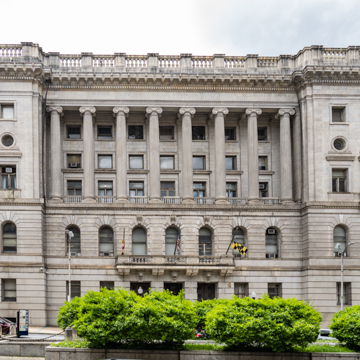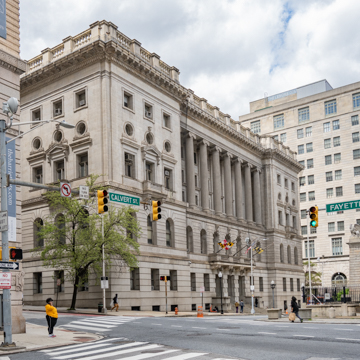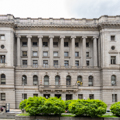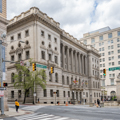Baltimore conducted a nationwide design competition for a new courthouse, which attracted entries from such prominent architects as Daniel Burnham and Carrère and Hastings. Beaux-Arts classicism was emerging as the design idiom for major public buildings, particularly just after the World’s Columbian Exposition of 1893 in Chicago. Local architects Wyatt and Nolting won the blind competition with a design creatively combining Greek, Roman, and Renaissance Revival details. The courthouse fills the entire block on the west side of Monument Square facing the Battle Monument. Its imposing facade features a tripartite composition of a tall rusticated granite base, white marble upper stories punctuated by a monumental Ionic colonnade at the center, and a balustraded cornice. The Beaux-Arts ideal of cooperation between the arts extended to the interior, with a rich decorative program of murals, sculptures, marble staircases, and other features. Painter John La Farge contributed The Lawgivers, a mural depicting a gathering of Moses, Emperor Justinian, Mohammad, and Confucius, four leaders of the world’s major religions.
The U.S. Post Office and Courthouse (1930–1932, James A. Wetmore, Supervising Architect of the U.S. Treasury) stands on the east side of Monument Square. Its classical design was intended to be a companion piece to the city courthouse when it replaced an earlier Richardsonian Romanesque building from 1890.
To the courthouse’s north is Preston Gardens (1914–1919), a four-block linear terraced green-space that mitigates a difficult ground level change along St. Paul Street. Embodying City Beautiful ideas, the park was designed by landscape architect Thomas Hastings. It features a central grand stairway set against a brick retaining wall leading to curving paired stairways that reach the upper promenade.





